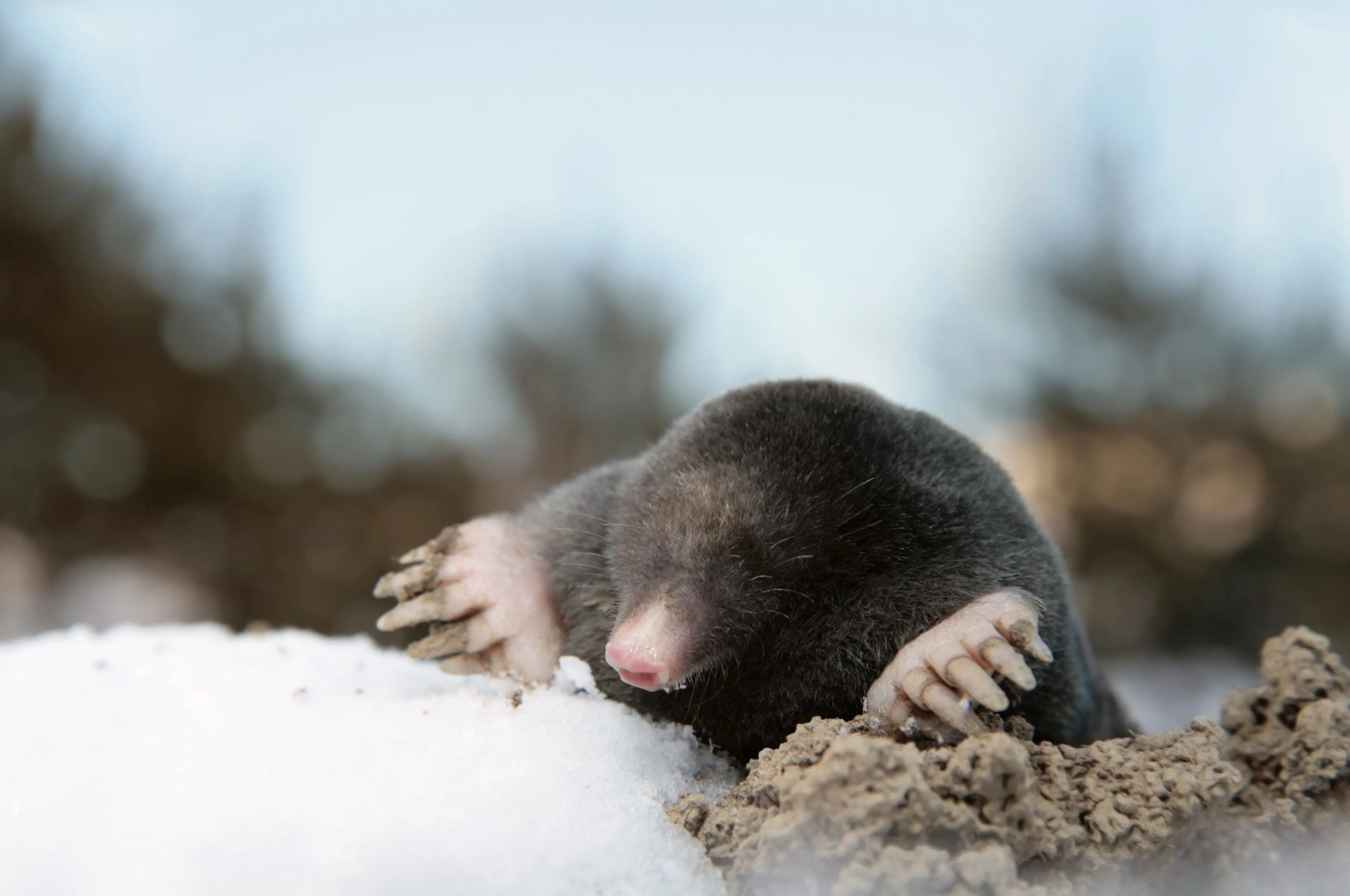A lot of people assume that moles hibernate during the winter, reappearing after the thaw to wreak havoc on your yard in the spring. However, moles actually remain quite active over the winter months. When the ground freezes, moles simply start to tunneling deeper into the soil. They then tunnel back up again when spring arrives and the weather starts to turn. Yet it is important to remember that they can continue to dig and eat all winter-long.
Moles leave dead grass in the wake of their tunneling and can disrupt root systems in your yard. They also push up soil and grass to create molehills, which, although easy to spot in the summertime, can be harder to catch over the winter. Fortunately, there are ways, even in the colder months, to prevent moles from tearing up your yard, garden, and general landscaping. Keep reading to learn how to protect your property from moles this winter, courtesy of our pest control pros at Purple Care.
5 Ways to Protect Your Landscaping & Yard from Moles This Winter
- Don’t Overuse Sprinklers: This tip is more applicable for the months leading up to winder, though it is still a good rule of thumb if you want to keep moles away from season to season. By overusing your sprinklers or irrigation system, you may end up with soil that is excessively saturated and loose. This type of soil is much easier for moles to tunnel through, and tends to attract more earthworms and grubs, which serve as the mole’s primary food source. While it is important to keep your grass healthy during the warmer months, overwatering doesn’t serve anybody—especially if you live in a part of the country that receives a lot of rainfall. Trust us, when it comes to your yard, less watering also means fewer moles.
- Put Mulch Down After the Frost: Most homeowners/business-owners put mulch down during the fall, as it is a proven insulator for plants over winter. However, mulch is also an insulator for moles. That’s why instead of putting down mulch early, and helping the moles on your property get as comfortable as possible, you should wait till after the first frost to take care of this. Usually, by the time the first frost sets in, moles will have already found shelter, meaning you will not attract any more into your yard.
- Install Physical Barriers: As simple as it may sound, erecting physical barriers is a great way to keep moles away from your flowerbeds and trees. You can do this by putting clothes liners on the bottom or top of your tree beds, at the base of your trees, or digging a barrier with rocks and laying wire mesh on top of it. This should encourage any moles in your yard to stop digging and find another property to move on to.
- Let Animals Get the Job Done for You: Moles have a lot of natural predators, such as snakes and various birds of prey. If you spot these predators in your yard, and you have a mole problem, don’t shoo them away, as they may provide valuable assistance in eliminating pests. You should also let your cat consider roaming your property if you have one and you trust it to be outside, as felines also like to hunt moles.
- Cut off Food Sources: You can’t have a mold problem if you don’t also, to a certain extent, have a bug problem. As mentioned above, moles feed on earthworms and grubs to survive, so getting rid of these pests can go a long way towards getting rid of moles, too. Fortunately, our experienced pest control team at purple care has a plethora of experience taking care of grubs and other insects. And if you are already dealing with a mole problem, don’t hesitate to call us for that, either. The DIY approach can only take you so far, so if moles have already started ruining the pathways and plants on your property, you can count on our professionals to get the job done ASAP.
To get a free quote on mole control or a range of other pests control options, call (817) 880-6052, or contact us online.




Comments (0)
Thanks for your comment!
Thanks for your feedback! Your comments have been successfully submitted! Please note, all comments require admin approval prior to display.
Error submitting comment!
There is a problem with your comment, please see below and try again.